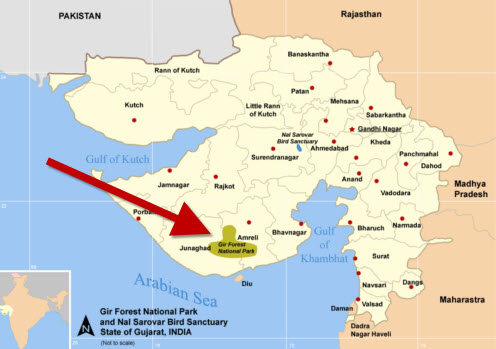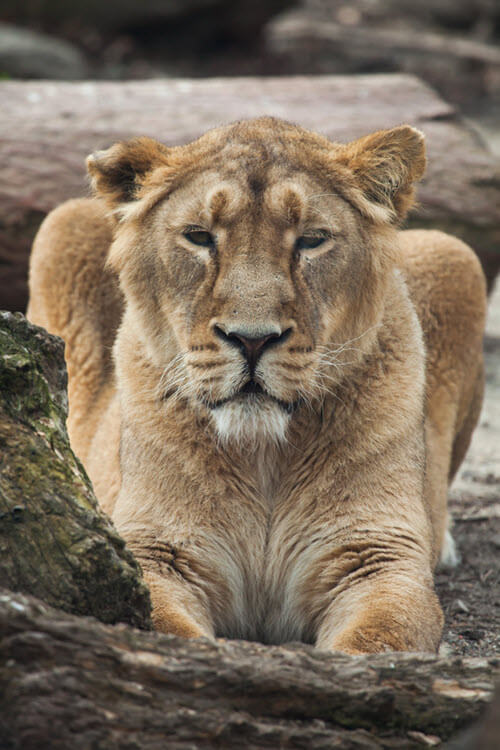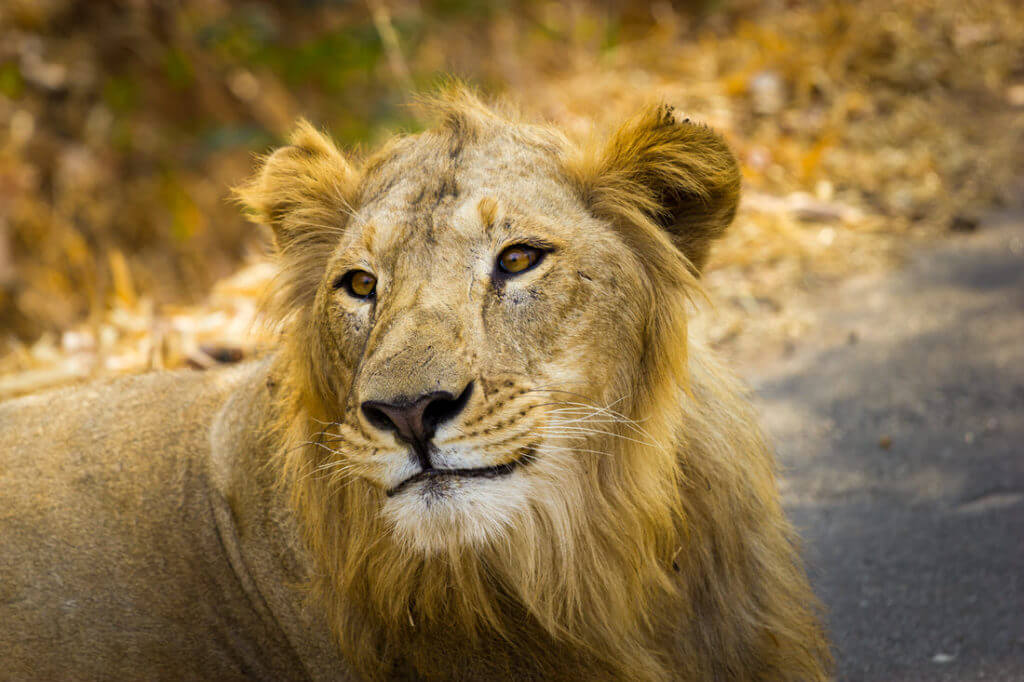The Asiatic lion is a big cat and lion subspecies that can only be found in Gujarat, India. Other big cats that inhabit India include the clouded leopard, snow leopard, Indian leopard and Bengal tiger. There are currently less than 500 Asiatic lions living in the wild.
The Asiatic Lion once roamed throughout Arabia, Asia Minor, Persia and India. The lion’s habitat included tropical dry forests, grasslands, thickets and deserts. Today the lion can only be found in Gujarat’s Gir Forest and wild life sanctuary.
Scientific Name: Panthera leo leo
Conservation Status: Endangered
Interesting Asiatic Lion Facts
- The males usually have smaller manes than African lions, but a larger tuft at the end of its tail.
- Was almost extinct, but has been recovering due to intense conservation efforts.
- Has a fold of skin along it’s underbelly.
More About Asiatic Lions
Physical Appearance
This big cat has a coat that is shaggier than the African lion, with a fold of skin along the belly and hair on the end of the tail and elbows. The lion’s fur can range in color from a pale brown to sand or grey. A unique characteristic of the lion is the fold of skin that runs across its belly. Males have a medium-length mane and their ears are visible and can weigh over 400 lbs. The cat is smaller in size than the African lion, but about the same size as a Central African lion.
Habitat (Where Asiatic Lions Live)
 Asiatic lions once inhabited Persia (Iran), Palestine (a region between Syria, Egypt and Arabia), Mesopotamia (Iraq, Syria and Turkey), Balochistan (southwestern Pakistan, southeastern Iran and southwestern Afghanistan) and India. Today, the last remaining lions live in a handful of protected areas in India’s Gir Forest.
Asiatic lions once inhabited Persia (Iran), Palestine (a region between Syria, Egypt and Arabia), Mesopotamia (Iraq, Syria and Turkey), Balochistan (southwestern Pakistan, southeastern Iran and southwestern Afghanistan) and India. Today, the last remaining lions live in a handful of protected areas in India’s Gir Forest.
Hunting & Prey (Diet)
The lion’s prey includes deer, cattle, antelope and wild pigs. Their preference is for large prey – animals that weigh considerably more than the lion itself.
 Reproduction and lifespan
Reproduction and lifespan
Just like African lions, Asiatic lions live together in small family and social units called prides. Asiatic lion prides tend to be smaller in size than African lion prides. Most Asiatic lion prides have only two females, while an African lion pride will have 4 to 6. Males will generally only associate with the females when they are hunting large prey or during mating.
Asiatic lions will mate with females all year long. At around 5 years of age, the males will reach sexual maturity, while the females will reach sexual maturity at 4 years of age. The gestation period for females is from 100 – 119 days. Females can give birth to as many as six cubs.
Asiatic lion cubs first begin eating meat at 3 months of age. However, they will continue to suckle for approximately 6 months. During the first 9 months of their life, they will learn to hunt.
The lifespan of an Asiatic lion is from 16 to 18 years.
Asiatic Lion Conservation
The remaining Asiatic lion population lives in a protected area. In-breeding is a top conservation issue for the lions due to the small size of their group. Diseases, forest fires and poaching are also significant concerns. Some Asiatic lions (about 20%) live outside the protected area.


thanks for information